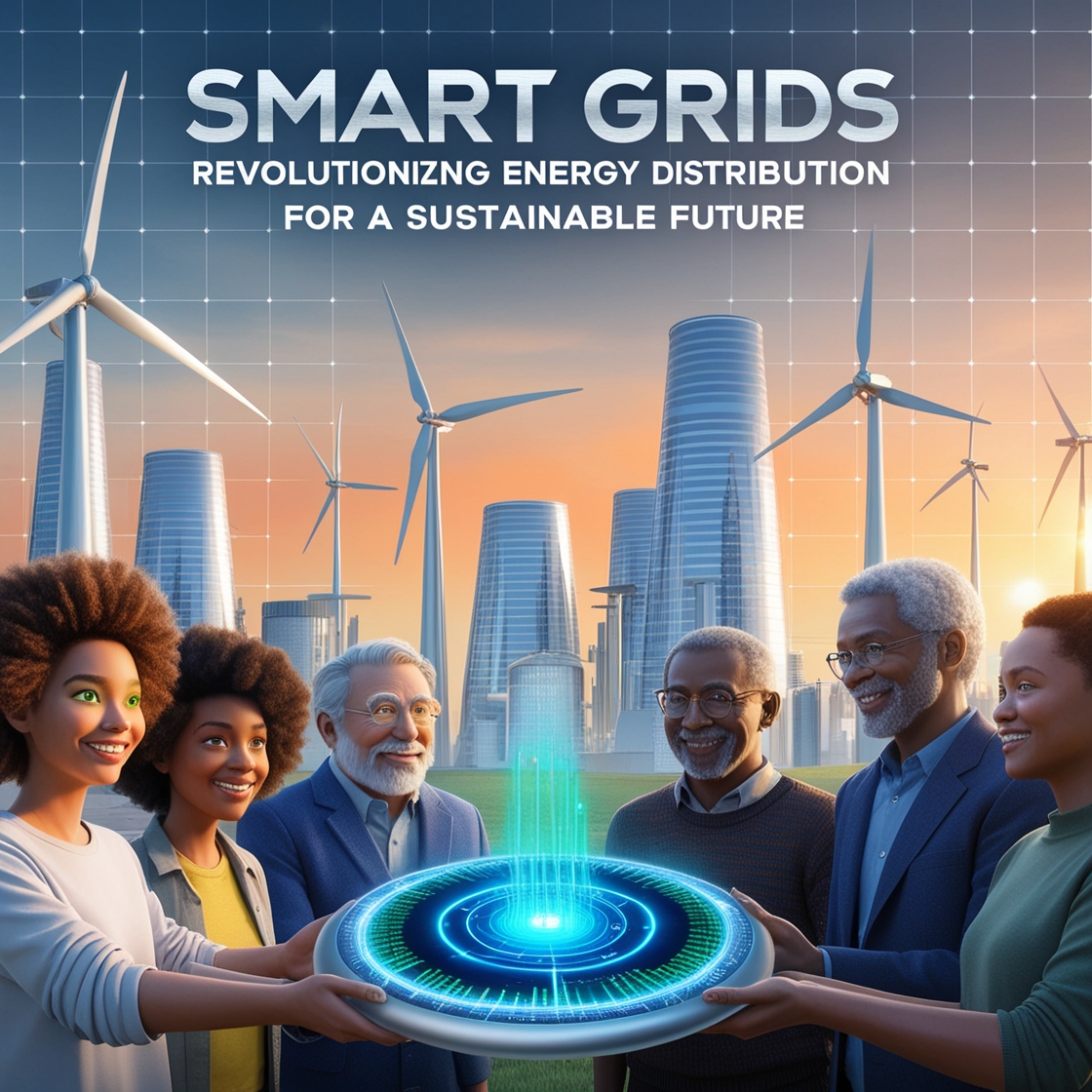Introduction
Energy is the lifeblood of modern society, powering homes, businesses, and essential infrastructure. As the world shifts toward sustainability, traditional energy grids face increasing challenges—primarily in handling fluctuating demands and integrating renewable energy sources. Enter smart grids, an advanced energy distribution system that is transforming the way energy is generated, distributed, and consumed.
Smart grids represent the future of energy, enabling a more resilient, efficient, and sustainable electricity network. Unlike traditional grids that rely on one-way communication, smart grids use two-way communication technology and advanced data analytics to make real-time decisions. But what exactly makes smart grids so revolutionary, and how do they benefit society? Let’s dive in.
Key Components of a Smart Grid
To understand the power of smart grids, it’s important to explore the core components that make them work.
Advanced Metering Infrastructure (AMI)
AMI involves the use of smart meters that enable two-way communication between utilities and consumers. These meters collect data in real time, allowing energy providers to monitor usage patterns and address outages more efficiently.
Distributed Energy Resources (DER)
DER refers to small-scale energy sources, such as solar panels and wind turbines, which can be connected to the grid. Unlike traditional centralized power plants, DER allows energy to be generated closer to where it’s consumed, reducing transmission losses.
Energy Storage Systems (ESS)
Energy storage plays a critical role in stabilizing the grid. Batteries and other storage systems store excess energy generated by renewable sources, such as solar or wind, for later use, ensuring a stable energy supply during peak hours or when renewables aren’t generating.
Grid Communication Technologies
A smart grid’s backbone is its communication network, enabling real-time data exchange between grid operators, energy producers, and consumers. These systems are vital for making instantaneous adjustments to optimize energy distribution.
The Role of Technology in Smart Grids
Modern technologies such as the Internet of Things (IoT), Artificial Intelligence (AI), and smart sensors are integral to smart grids, ensuring that they operate efficiently.
Internet of Things (IoT) Integration
IoT devices allow various components of the smart grid to communicate and interact in real time. For instance, smart thermostats in homes can adjust energy consumption based on grid demand, reducing strain during peak hours.
Role of Artificial Intelligence (AI) in Energy Management
AI algorithms analyze the vast amounts of data collected by the smart grid to predict energy demand, optimize power flows, and enhance grid performance.
Smart Sensors and Data Analytics
Smart sensors monitor the health of the grid infrastructure, detecting faults or inefficiencies. Data analytics processes this information, providing actionable insights to energy providers and helping reduce outages.
Benefits of Smart Grids
Smart grids offer numerous benefits that traditional energy systems simply can’t match.
Efficient Energy Management
By continuously monitoring and adjusting energy distribution in real time, smart grids ensure that energy is used more efficiently, reducing waste and improving overall performance.
Improved Reliability and Resilience
One of the standout features of smart grids is their ability to self-heal. Smart grids can detect faults instantly, isolate problematic areas, and reroute energy, minimizing outages and ensuring a more reliable supply.
Reduction in Energy Costs
Smart grids help reduce energy costs for both utilities and consumers. By enabling dynamic pricing and demand response programs, consumers can adjust their energy usage to times when electricity is cheaper.
Environmental Sustainability
Smart grids support the integration of renewable energy sources, which significantly lowers carbon emissions. Additionally, energy efficiency measures reduce the overall demand for energy, contributing to environmental sustainability.
Challenges in Implementing Smart Grids
Despite their advantages, smart grids are not without challenges. High initial costs, cybersecurity risks, and regulatory obstacles need to be addressed for widespread adoption.
High Initial Costs
Deploying a smart grid requires substantial investment in infrastructure, including new meters, communication systems, and energy storage solutions.
Cybersecurity Risks
As smart grids rely on digital communication, they are vulnerable to cyberattacks. Ensuring robust cybersecurity protocols, such as encryption and blockchain technology, is essential to protect these systems.
Regulatory Hurdles and Policy Challenges
The energy sector is heavily regulated, and implementing smart grid technologies may face resistance from existing regulations and slow policy changes.
Future Trends in Smart Grids
The future of smart grids is exciting, with several emerging trends poised to enhance their capabilities even further.
Integration of Electric Vehicles (EVs)
Electric vehicles are increasingly seen as mobile energy storage units that can feed power back into the grid, a concept known as Vehicle-to-Grid (V2G) technology.
Peer-to-Peer Energy Trading
Blockchain technology is enabling decentralized energy trading between individuals and businesses, bypassing traditional utility companies. This could lead to more democratic and efficient energy markets.
Conclusion
Smart grids are revolutionizing the way we think about energy distribution. By incorporating advanced technologies, smart grids are not only making energy distribution more efficient but are also key to a sustainable future. With ongoing advancements, smart grids are set to transform the energy landscape, integrating renewable sources, and empowering consumers like never before.
FAQs
- What is a smart grid?
A smart grid is an advanced energy network that uses two-way communication and data analytics to optimize the generation, distribution, and consumption of electricity. - How do smart grids benefit consumers?
Smart grids offer dynamic pricing, help reduce energy bills, and enhance the reliability of power by preventing outages through automated fault detection. - What are the environmental benefits of smart grids?
Smart grids support renewable energy integration, reduce carbon emissions, and improve overall energy efficiency, contributing to environmental sustainability. - Are smart grids more secure than traditional grids?
While smart grids offer advanced technologies, they also introduce cybersecurity risks. However, with proper security measures like encryption, smart grids can be made highly secure. - How can individuals contribute to smart grid development?
Individuals can contribute by adopting smart home technologies, participating in demand response programs, and using renewable energy sources like solar panels.
